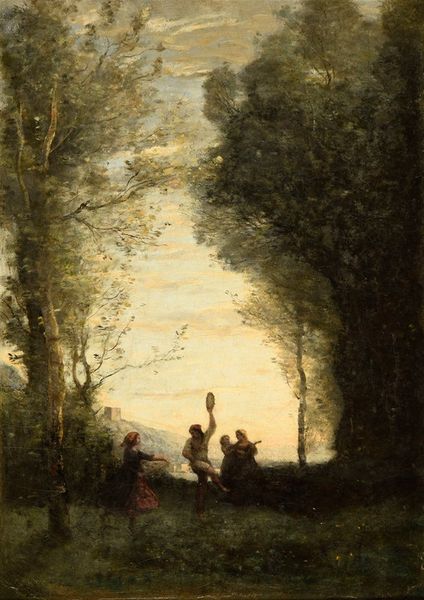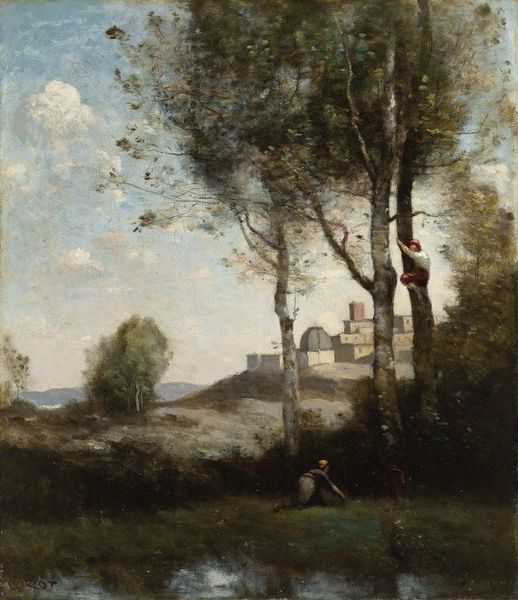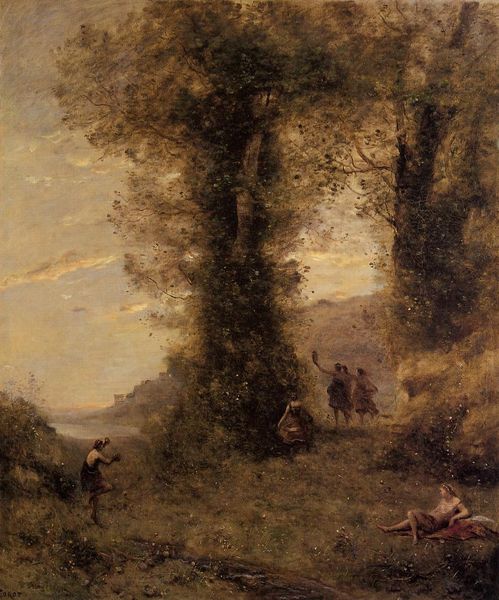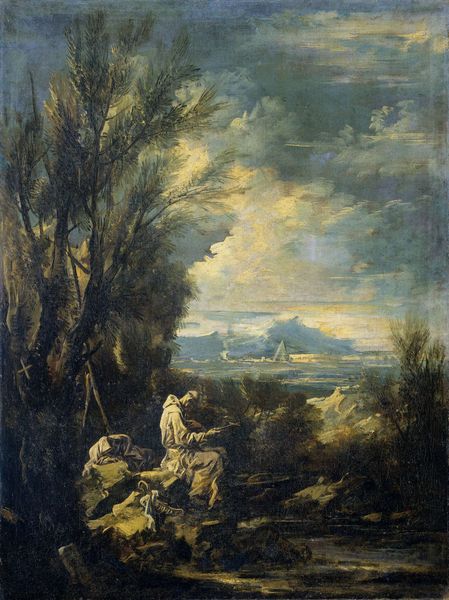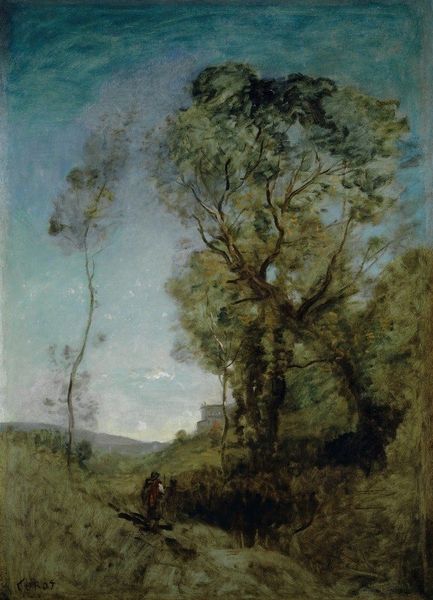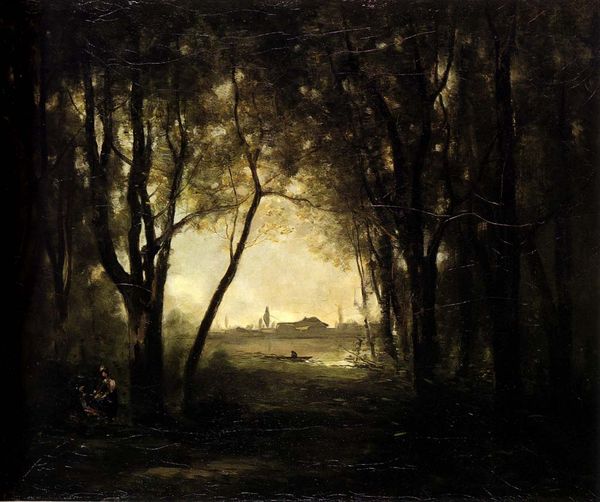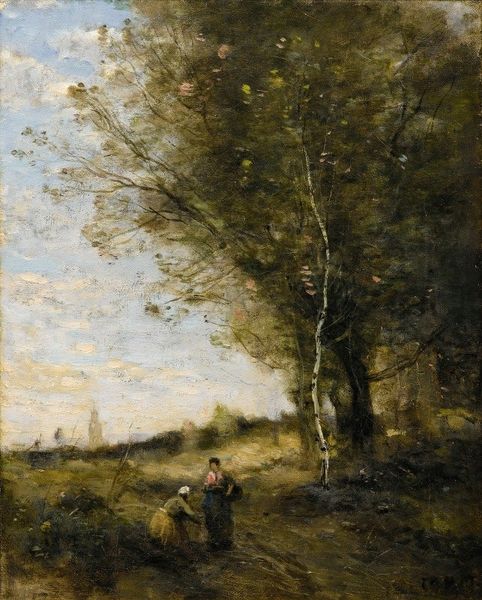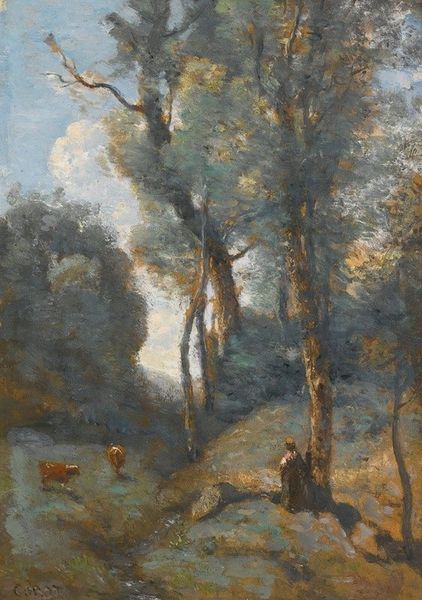
Copyright: Public Domain: Artvee
Editor: This is "Saint Sebastian Succored by the Holy Women" painted by Camille Corot in 1874, using oil paints. The painting strikes me as both serene and somber. What catches your eye when you look at this piece? Curator: I see a painting that obscures the labor of its creation, while ironically representing labor itself. Consider the materiality of oil paint – derived from the earth, processed, bought, and layered meticulously. Corot gives us this almost dreamlike image of Saint Sebastian, seemingly floating in a landscape, yet the scene’s very existence depends on complex material networks and the artist’s skilled, repetitive motions. How does this relate to the idea of Impressionism? Editor: That’s a great point. I hadn’t really considered how much work went into creating what appears to be an effortless scene. How does the consumption of materials play a role in understanding the piece? Curator: Precisely. Consider the pigments. Where did they come from? The tools - brushes, easels. Corot's artistic choices—the hazy atmosphere, the delicate rendering—depend on an extensive support system, from manufacturers to dealers. The image of succor almost veils these practical conditions of artistic labor. Editor: So, the subject of the painting is almost a distraction from the underlying industrial aspects that allowed its creation? Curator: In a sense, yes. It presents this timeless scene, while actually deeply embedded within a specific moment of industrialized art production. Are we meant to consider painting as an industrialized process rather than an individual inspiration? Editor: That's a really interesting point; it completely reframes how I look at this piece. Thanks! Curator: My pleasure! Thinking about art in terms of materials and the social relations of their making opens new ways of seeing familiar works.
Comments
No comments
Be the first to comment and join the conversation on the ultimate creative platform.


